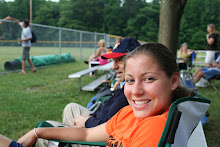
"I've always felt the moment. People call me lucky, and luck is a wonderful attribute. But it's more - it's a sense somehow. It's inexplicable, it happens. It's a feeling and you just move into that direction. Someone once said that wherever I am is the perfect picture. I didn't like the way it sounded but I believe that. It's not that I'm positive of it deep down inside, it's that I have to believe it. When you make that decision - 'This is the place to go' - you've got to live with it. There's no alternative." - Walter Iooss
Sports photographer for Sports Illustrated: http://www.walteriooss.com/
He shoots action and portraits of athletes. I think he does really strong portrait work because there is emotion in the athletes. For the portraits that are shot in the studio I feel like the lighting is dramatic, one directional, and high key because it is not flat. When I used the soft box, I didn't get the results I was looking for because the box made everything even in tonality, and I wanted contrast. Some of his shots are close up, others are action from further away. I like the shot of Kevin Garrett where he is leaning on the basketball because of the round back lighting that exaggerates his form. It looks like there was a light coming from behind and above the camera. For his portraits that were shot on the court, he tends to shoot literally from the ground looking up at the athlete. I think he did this to really show the basketball players' height and impressiveness. For the football portraits shot on the field he emphasizes the environment. The stadium and field are just as important as the athlete who is in the image. I like some of his images of the athlete's hands. They are sort of like portraits, and still lives at the same time. Their hands are describing themselves and their pain for their sport. I think these shots hold just as much emotion as a portrait with their face in them. For golf shots with Tiger Woods, I like his point of view; as if he is the golf ball. I think that the sky is used to make the shots more dramatic and interesting. For the soccer shots, the one of Pelle I find very intimate and dramatic at the same time. It's like there is a spotlight on his face and the ball, and not everything has to be in the spotlight, shadows are important. He divided his portfolio into sections: swimsuit 2010, new 60s finds, recent work, baseball, basketball, Cuba sports, diaries, football, golf, icons, Jordon, musicians, Olympic sports, soccer, swimsuit and glamor, surfing, children sports, and travel. I like his travel section at the end because all of the other shots are of people and I find the images in this section very good as well and it shows he can shoot different subjects.




